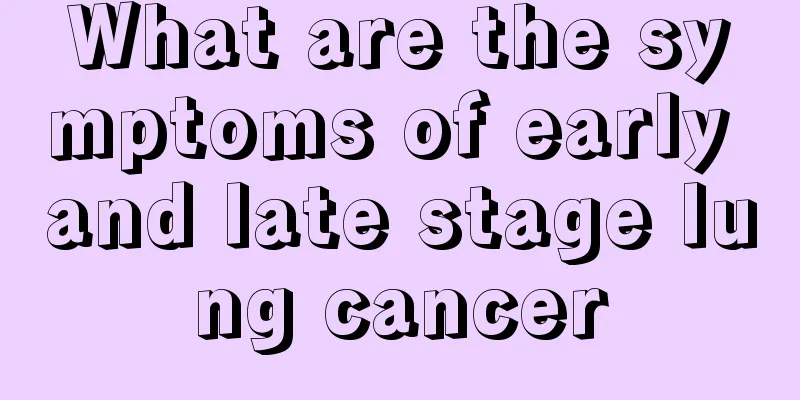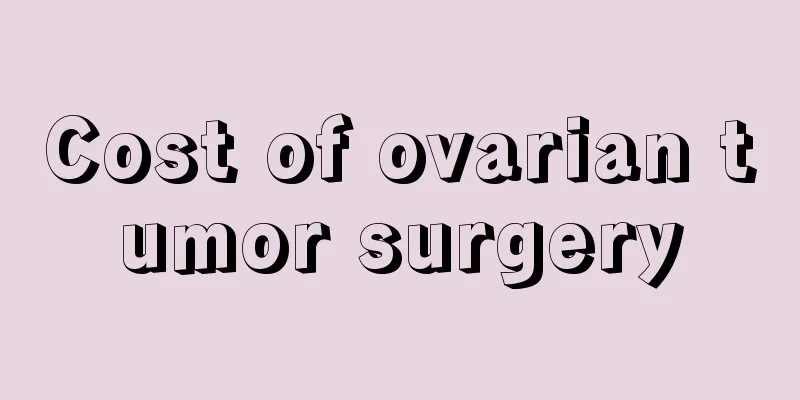Adolescent idiopathic scoliosis needs to be treated as early as possible

|
Adolescent idiopathic scoliosis is common in females, especially girls during this period of development. Because they are embarrassed, they may hunch over, which can easily cause scoliosis. Severe scoliosis requires timely surgical correction. 1. Treatment of adolescent idiopathic scoliosis 1. Adolescent idiopathic scoliosis is the most common scoliosis, which occurs more frequently in females than in males, with the most common thoracic curve being the right side. The most important thing in treating adolescent scoliosis is to evaluate the patient's developmental period according to the Risser sign. For mature patients below 20°, no treatment is required. For immature patients, physical therapy can be performed, and follow-up X-rays can be taken every six months until they mature. If the scoliosis exceeds 25° and growth and development are not yet mature, Milwaukee brace or thoracolumbar brace should be given as soon as possible, combined with physical therapy or electrical stimulation treatment, until the entire spine growth stops and the Risser sign is above grade 4 (IV), then the brace should be removed. For adolescent scoliosis patients with a Cobb angle of more than 40° who are still growing and developing, conservative treatment should no longer be used. Instead, spinal correction fixation and fusion surgery should be performed directly. The Harrington instrument is the most commonly used. 2. For adult patients who develop the disease before skeletal maturity and seek medical treatment in adulthood, some authors point out that those whose thoracic curve angle is in the range of 50°-80° may still progress, while those with scoliosis less than 50° and greater than 80° are less likely to progress. It is advocated that for progressive thoracic scoliosis after skeletal maturity, if the angle reaches 50°, surgical fusion should be performed. If the thoracic and lumbar scoliosis angle exceeds 50°, surgical treatment may be considered to prevent low back pain. In short, the treatment of idiopathic scoliosis should select appropriate treatment methods based on the patient's age, scoliosis type, etc. 2. Symptoms of adolescent idiopathic scoliosis 1. Adolescence is a stage of rapid bone growth and development, and it is also a period when scoliosis progresses faster. There are many factors that affect the progression of scoliosis. In addition to age, it is also related to the type of scoliosis, menarche, Risser sign and Harrington factor. The Lonstein survey reported different incidence rates of scoliosis at different ages: 2.5% for those under 9 years old, 4.1% for 10 years old, 8.8% for 11 years old, 19.8% for 12 years old, 24.5% for 13 years old, 19.5% for 14 years old, and 20.8% for those over 15 years old. Explains the relationship between age and development. 2. Based on the results of the census conducted between 1970 and 1979, Lonstein concluded that the progression of the scoliosis angle is positively correlated with the original angle, and negatively correlated with age and Risser sign. For example, if the original scoliosis angle was less than 19° and the Risser sign was grade 2, 3 or 4 (or grade I, II, III, IV), only 1.6% of the patients had progression, while for another group with a scoliosis angle of 20°-29° and a Risser sign of grade 0 (unossified) or grade 1 (grade I), the progression rate was as high as 68%. In addition, the Harrington factor also has a certain relationship with progression: that is, the value obtained by dividing the scoliosis angle by the number of spinal segments included in the scoliosis. The average value for non-progressive type is 2.7, and if it exceeds 3.4, it is progressive type. Among the single factors, the type of scoliosis also has a certain relationship. Bilateral scoliosis is more likely to progress than unilateral scoliosis, and scoliosis in the lumbar and thoracolumbar segments of bilateral scoliosis is more likely to progress than thoracic scoliosis. Therefore, different treatment methods should be selected according to the patient's age, scoliosis type, and different clinical manifestations. |
<<: Hashimoto's thyroiditis, thyroid enlargement that cannot be ignored
>>: How big a thyroid nodule needs surgery? Malignant lesions require surgery
Recommend
What does a negative cervical cancer screening test mean
What does a negative cervical cancer screening re...
What to do if you have bone cancer and can't defecate
In the late stage of bone cancer, systemic sympto...
What are the differences between antral adenocarcinoma and gastric cancer? Antral adenocarcinoma is a type of gastric cancer
Antral adenocarcinoma is a type of gastric cancer...
How to scrape the neck
Scraping is a very good way to maintain health. S...
What is the best way to treat pituitary tumors?
What is the best way to treat pituitary tumors? P...
The cause of vomiting and fever in polycystic kidney disease turns out to be this
Symptoms of vomiting and fever in patients with p...
What to do if your nose bleeds
When our nose is hit, it is easy to bleed. At thi...
Who are the high-risk groups for liver cancer? These 4 types of people are the high-risk groups for liver cancer
Liver cancer is a common disease in my country, a...
Daily health care knowledge for uterine cancer
Many women will suffer from uterine cancer. Patie...
Will there be any changes in thyroid cancer after half a year?
Thyroid cancer is a malignant tumor. Patients usu...
What is the best way to remove abscesses?
Pustules on the face not only affect the appearan...
How to classify clavicular lymphadenitis
Abnormalities in lymph nodes may indicate certain...
What are the effects of alcohol on the prevention of liver cancer? Can anhydrous ethanol injection replace surgery to treat small liver cancer?
What are the effects of alcohol on liver cancer p...
Can peanuts and corn be cooked together
Peanuts and corn can be eaten together because pe...
What are the symptoms of viral conjunctivitis
Speaking of viral conjunctivitis, this disease is...









